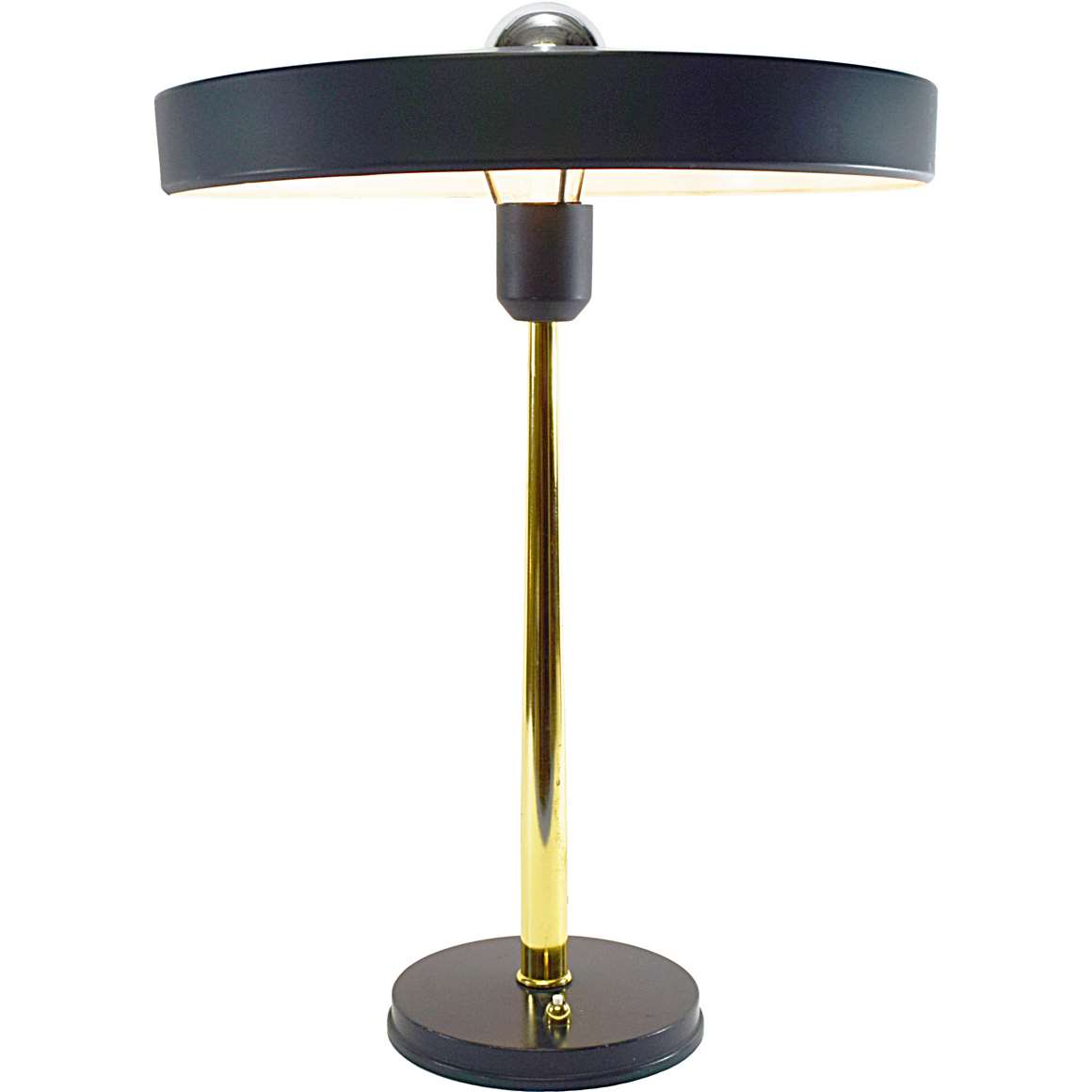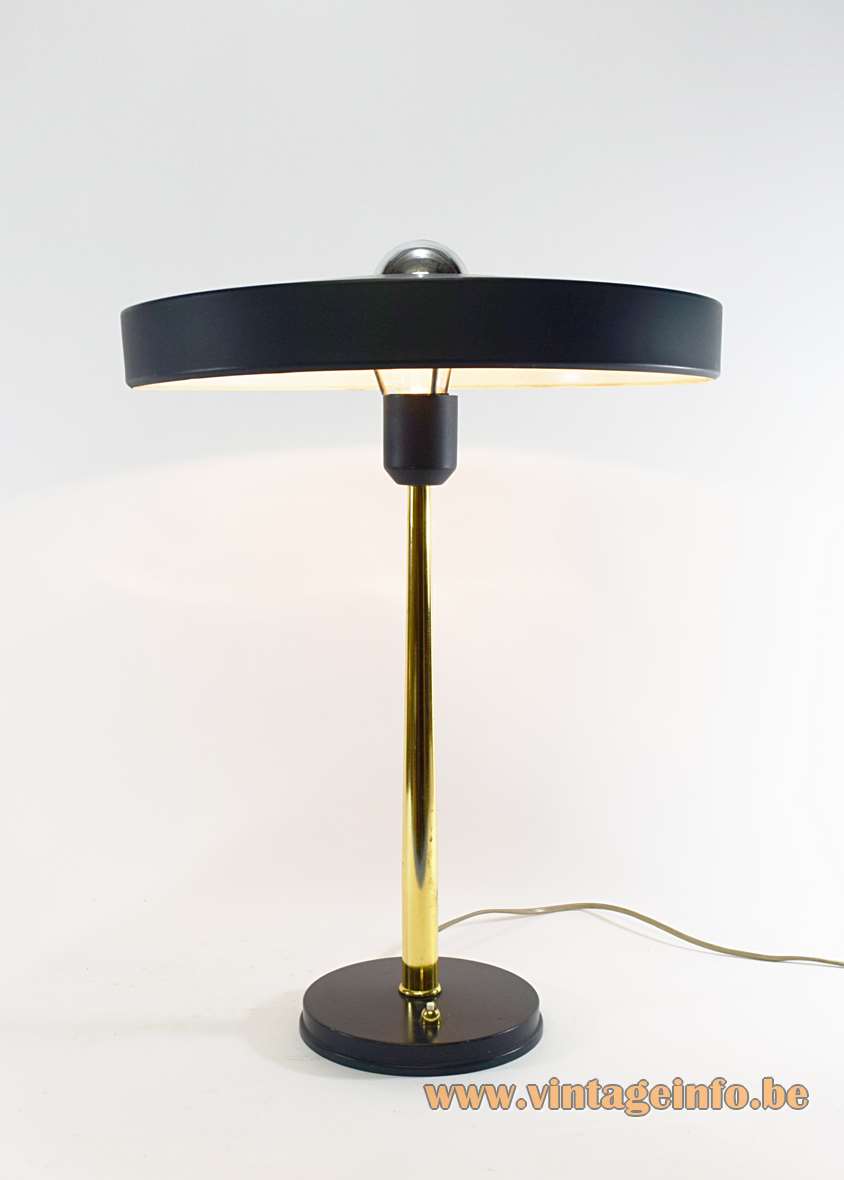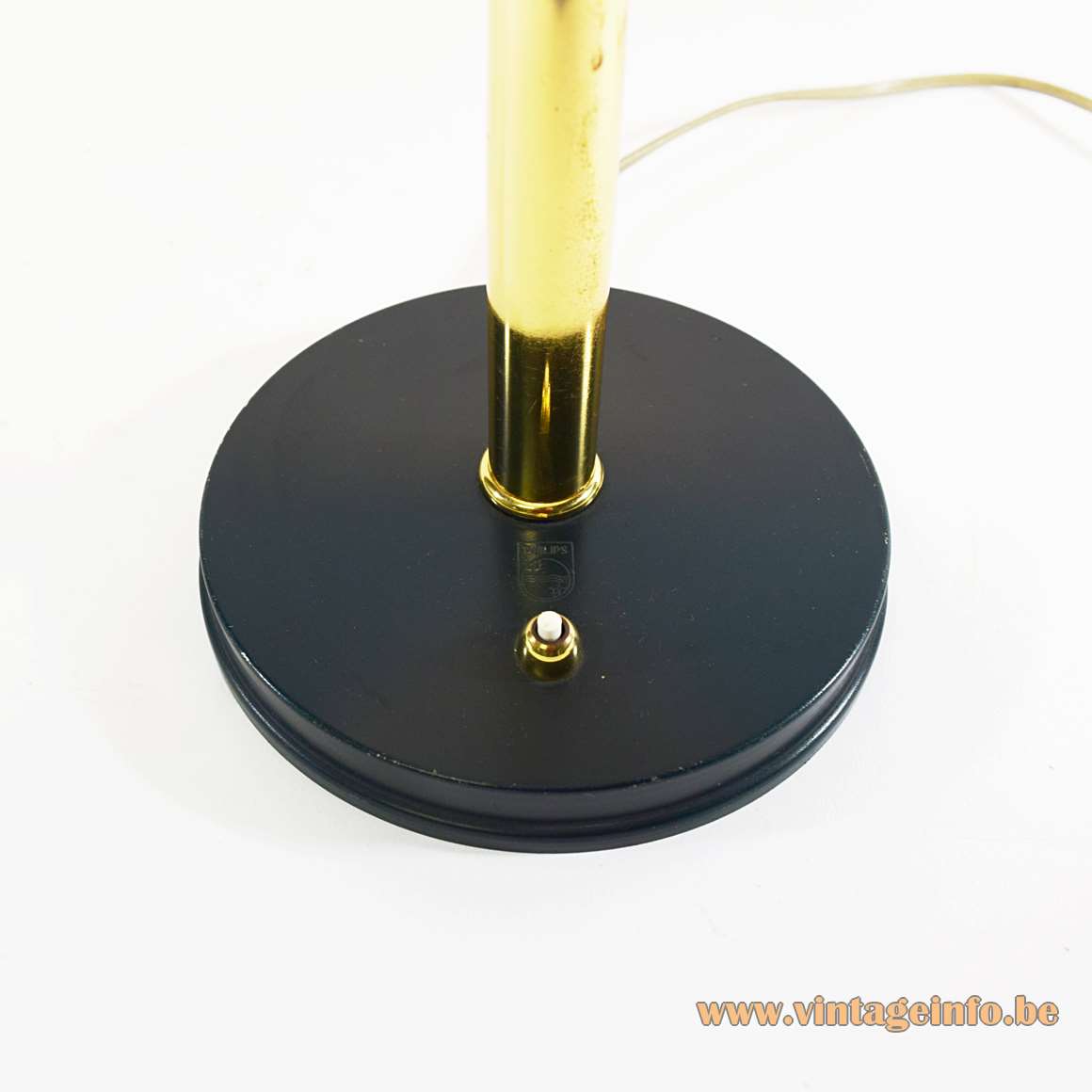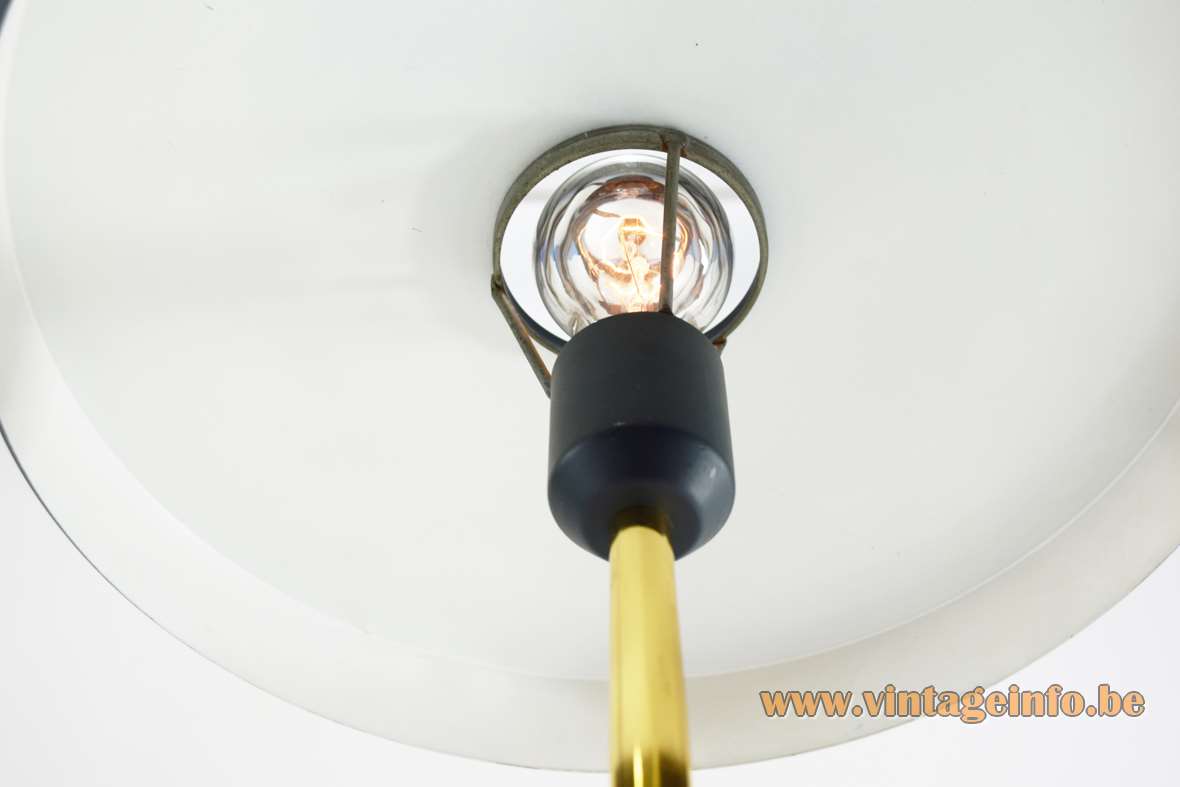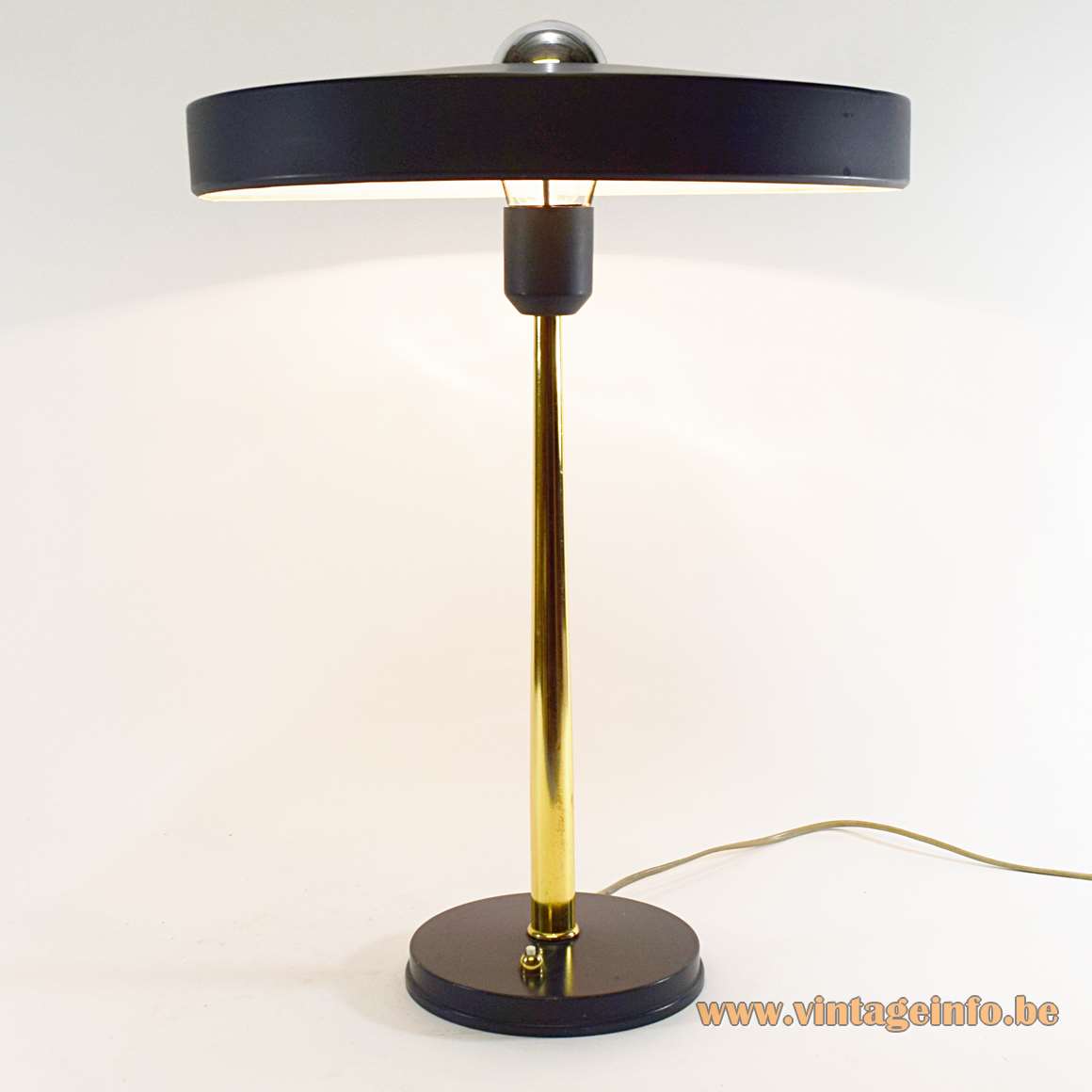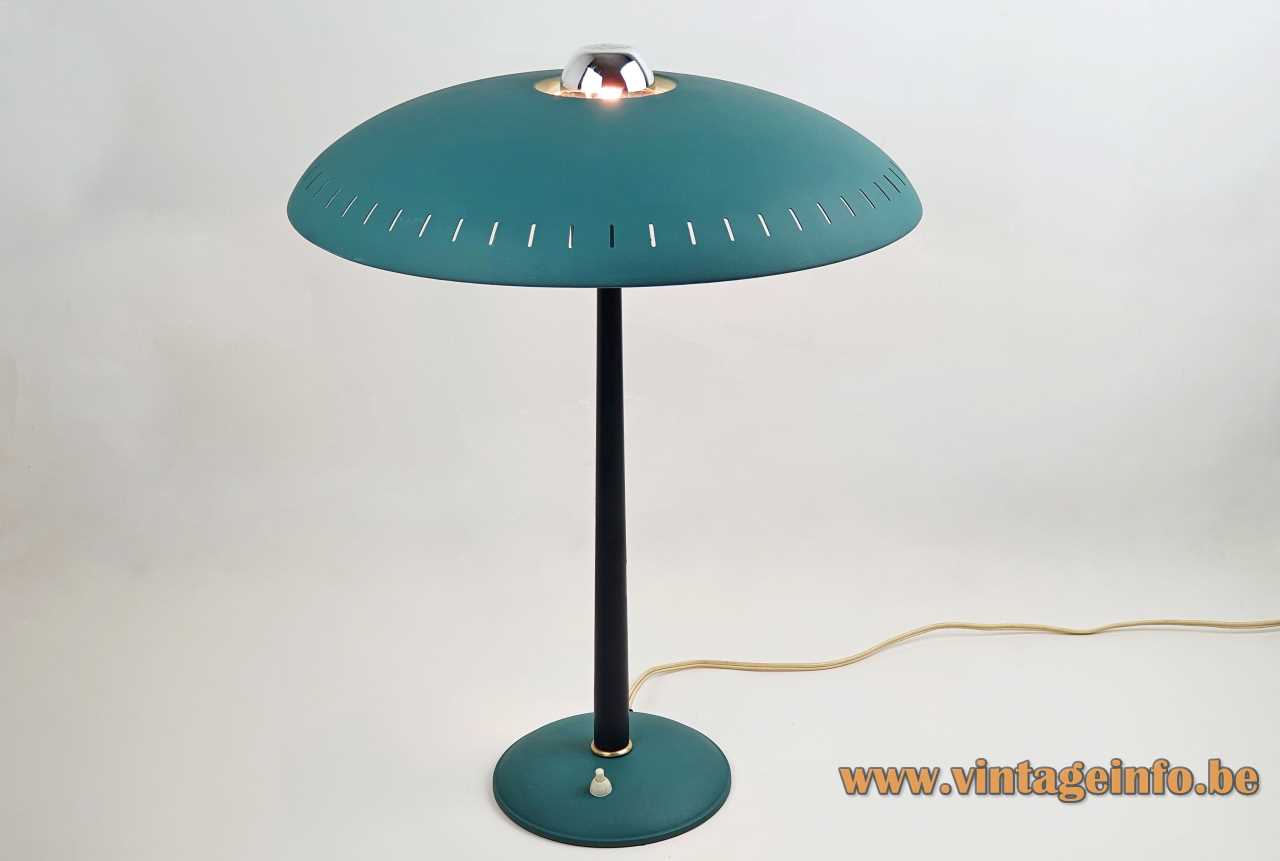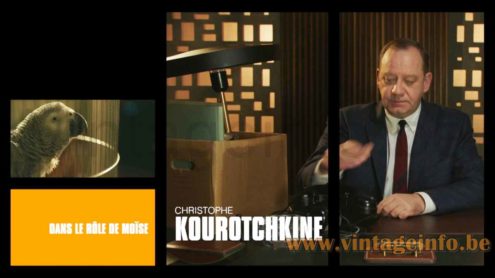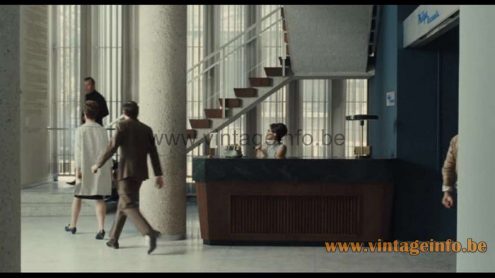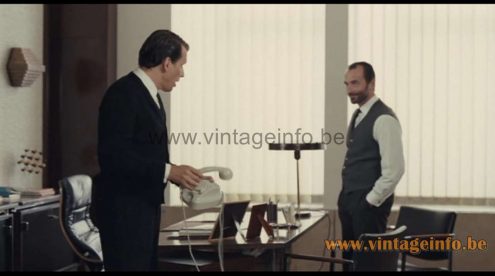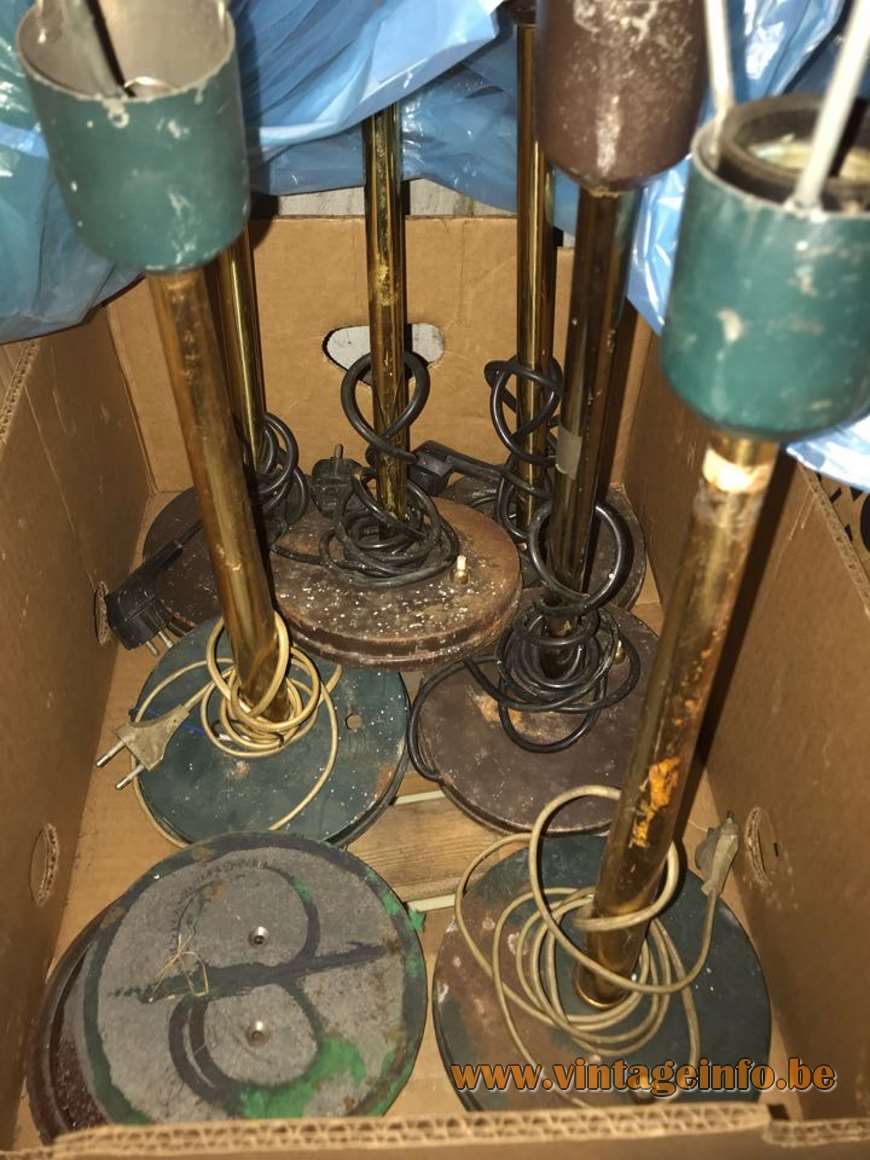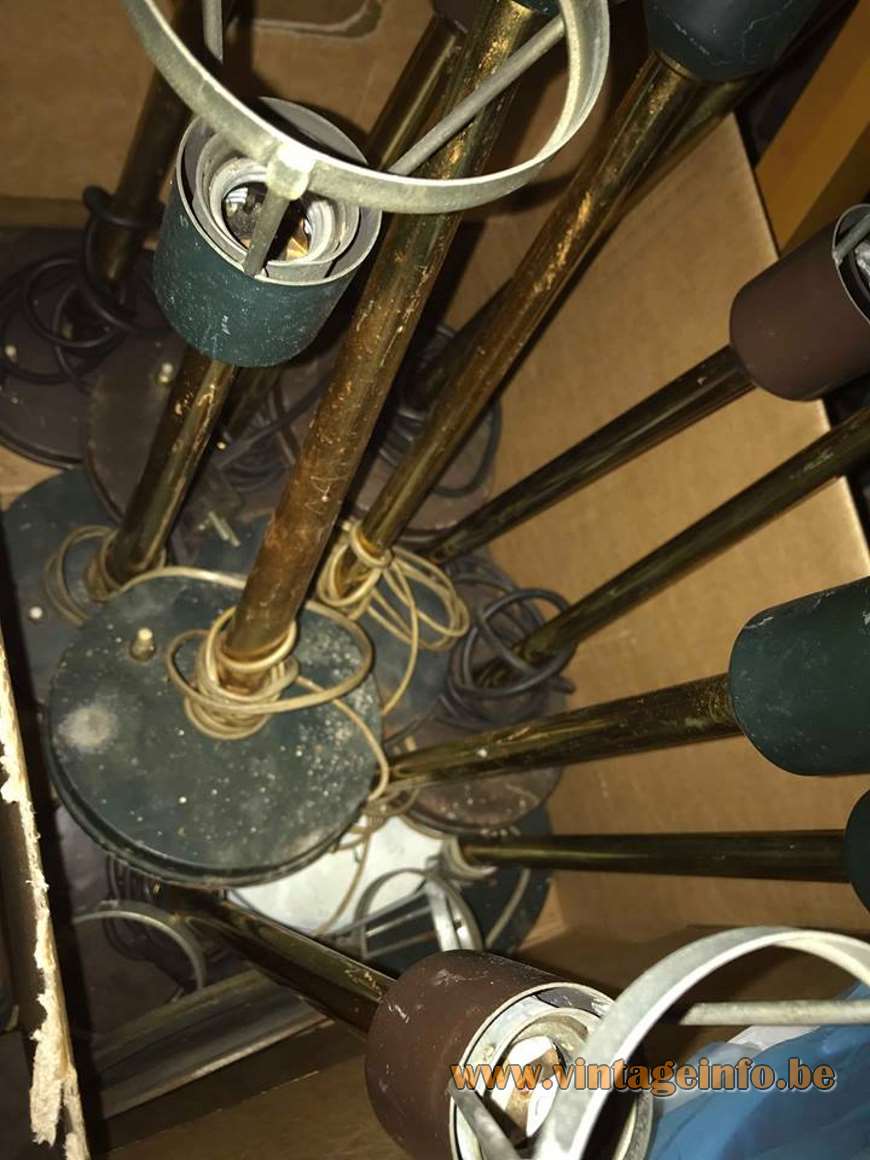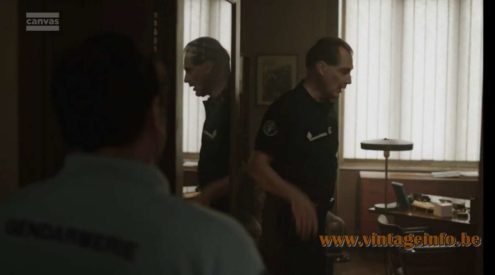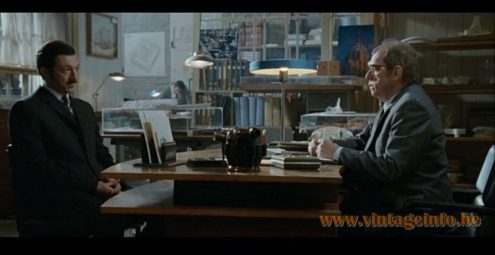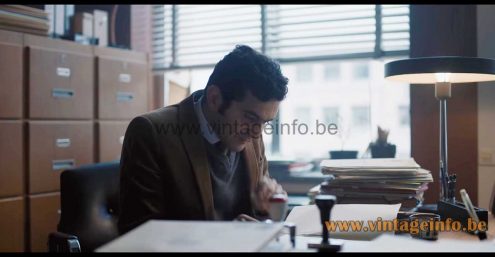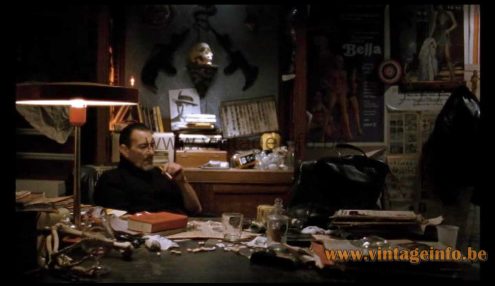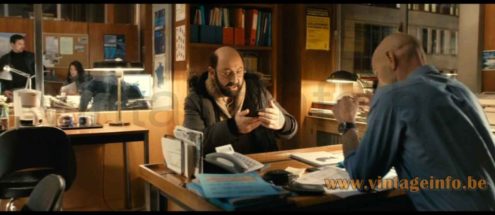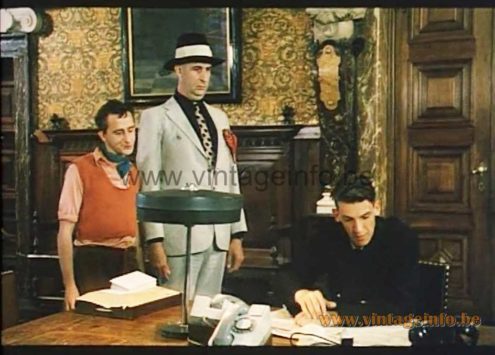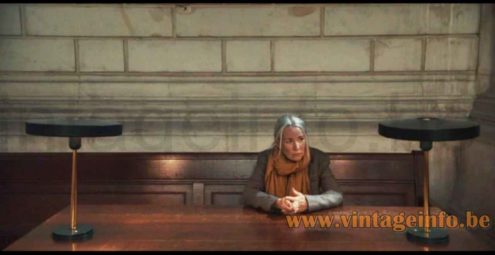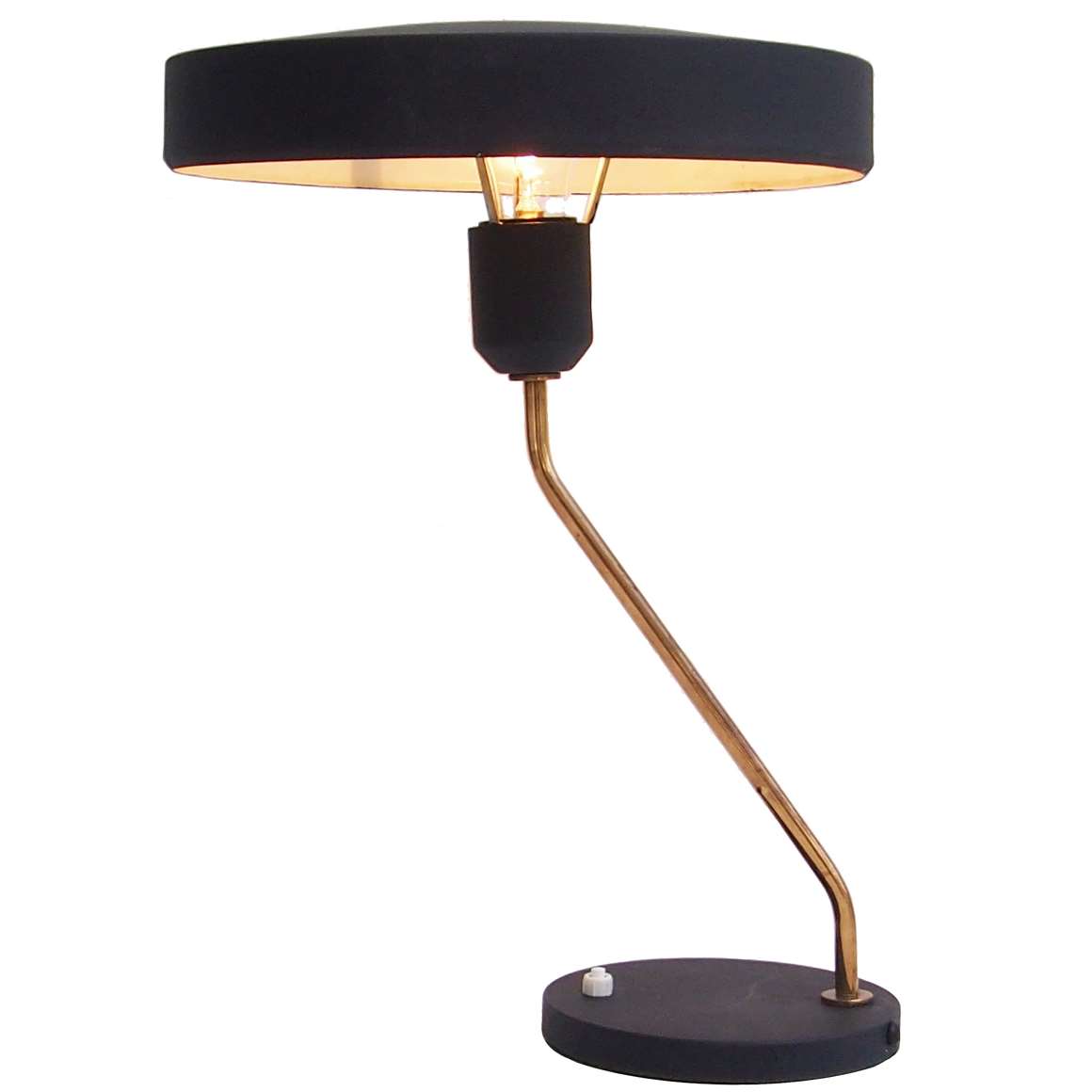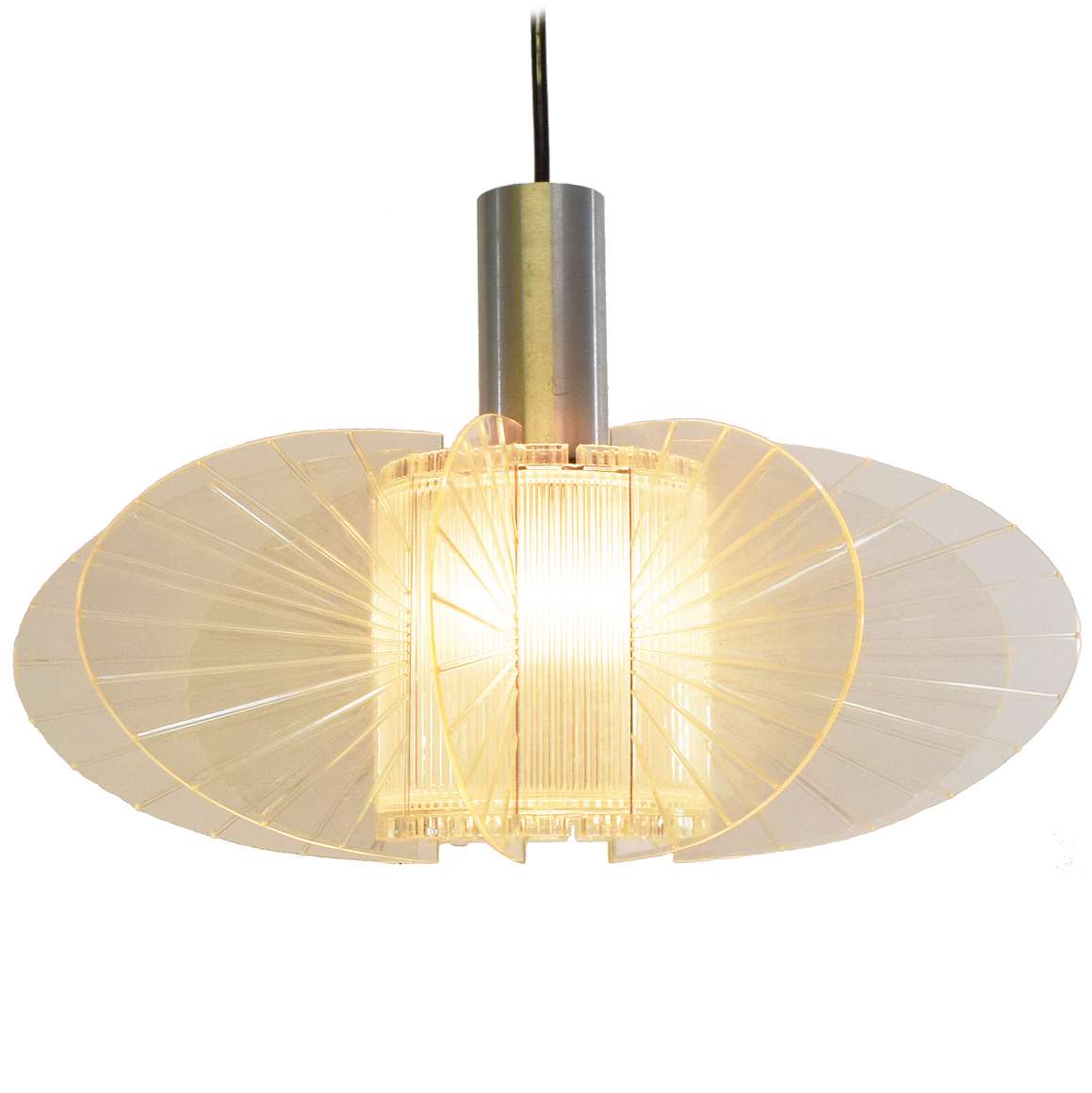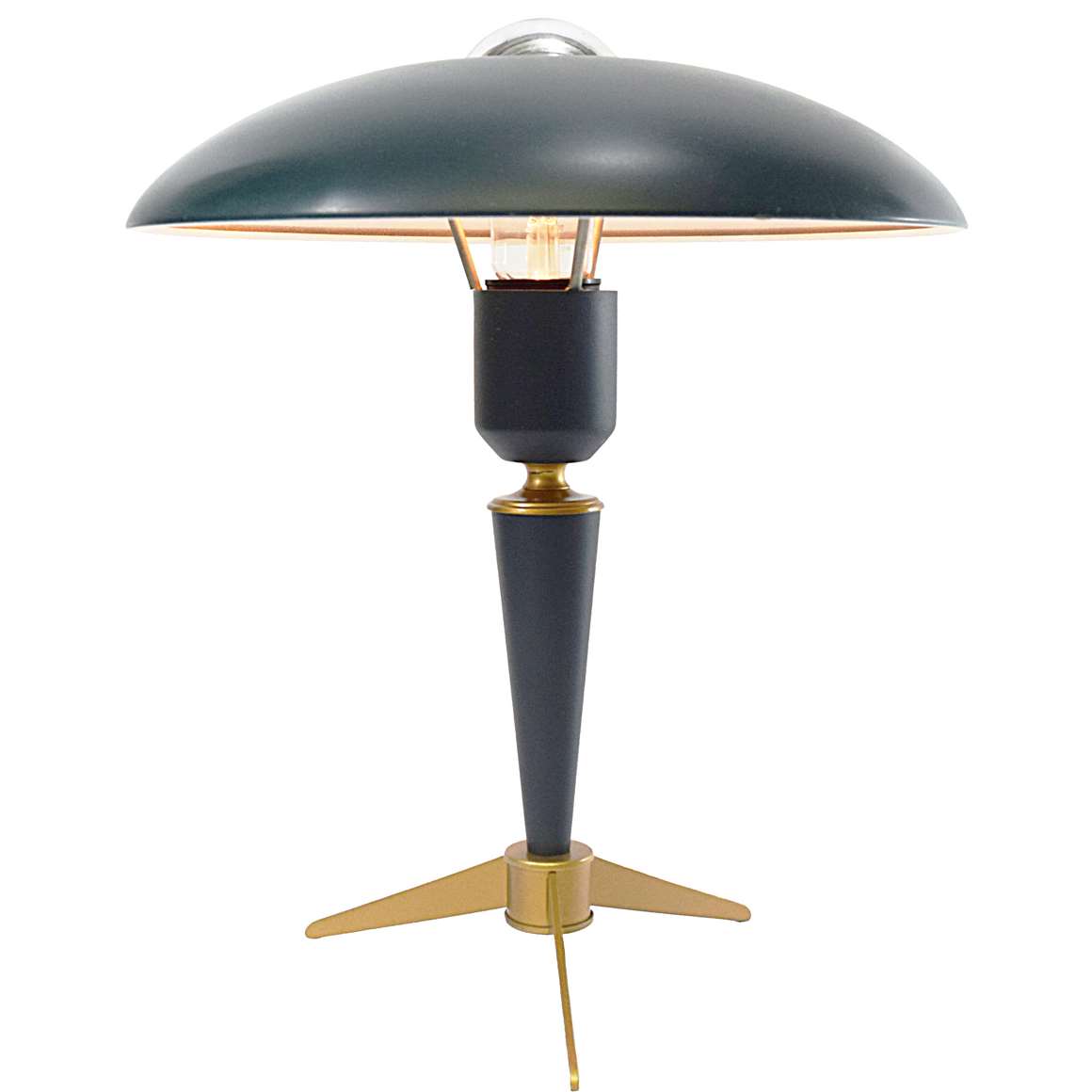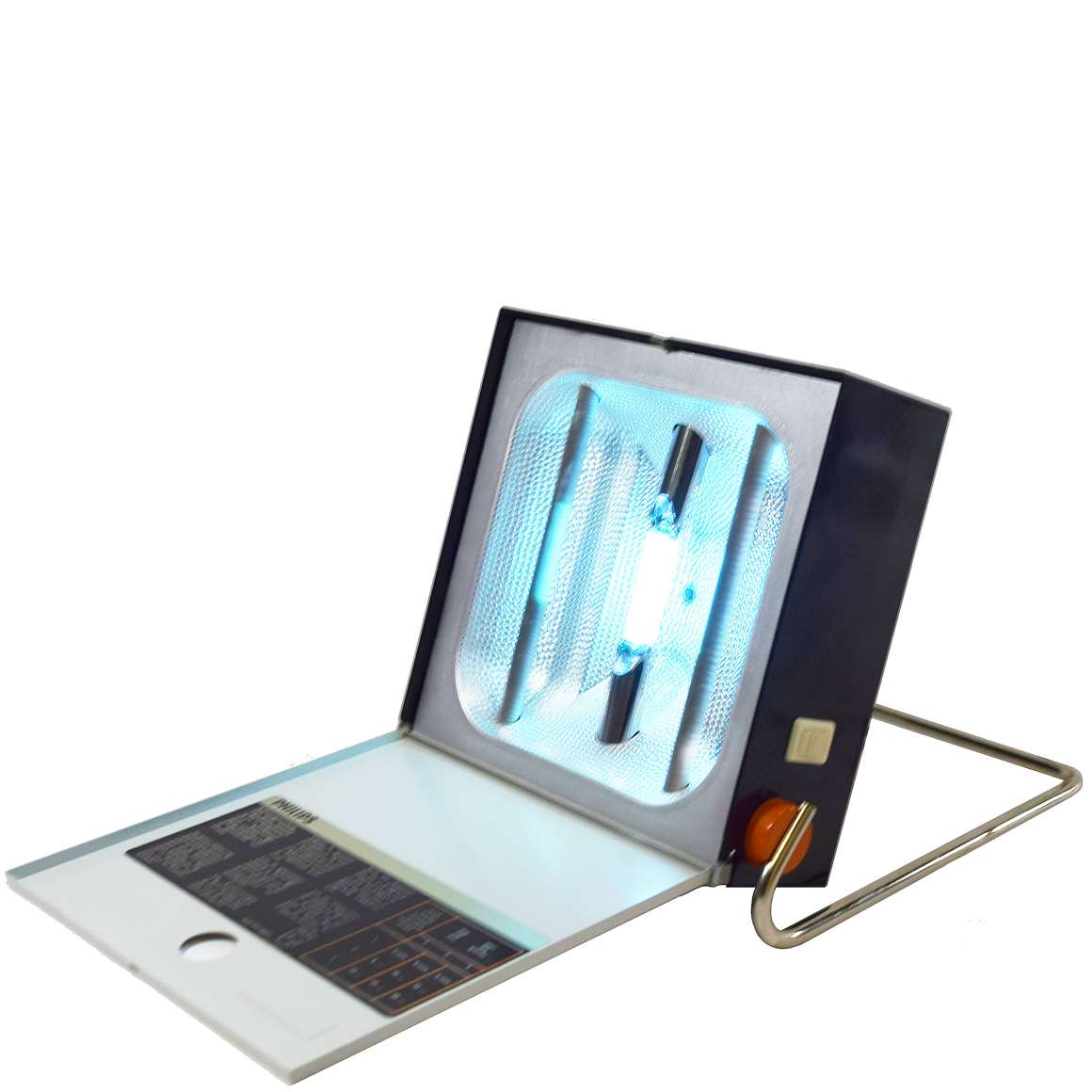Philips Major Desk Lamp – Boulanger Version
At some point in the 1980s, Boulanger from Belgium started selling the Major as model 4459. It appears in a late 1980s catalogue. It has a typical Philips colour, in all probability it was produced by Philips in Turnhout, Belgium for Boulanger, after Philips ceased production for itself. So, if you have this lamp, without a Philips logo pressed in the base, then your lamp is the Boulanger version, and not some strange or early Philips version, as sometimes claimed.
Philips Major Desk Lamp – 1980s Boulanger Catalogue Picture
Philips Major Desk Lamp – 1960s Philips Catalogue Picture
The Major desk lamp together with the President desk lamp, a lamp with two switches. These switches allowed you to adjust the light intensity to 60 or 100 watts. They were special incandescent bulbs with a double filament.
Philips Major Desk Lamp – Philips Senior Desk Lamp
The Senior desk lamp is the predecessor of the Major and Timor 69 desk lamp. The lampshade and base have been modernized.
Philips Major Desk Lamp – Evoluon building Eindhoven
The Evoluon, designed by Louis Kalff and Leo De Bever, is a UFO -shaped building located in Eindhoven, the Netherlands. It was built in 1966 as a science museum by the electronics and electrical company Philips. It quickly became a landmark in Eindhoven, where Philips was headquartered at the time.
Lamps In The Movies
Au Service De La France (2015 – 2018) TV Series
A Philips Major desk lamp (or Timor 69) was used as a prop in the 2015 – 2018 French parody spy TV series Au Service De La France (A Very Secret Service). Starring Hugo Becker, Wilfred Benaïche and Christophe Kourotchkine. Many lamps were used, mostly French lamps. Here in episode 1, season 2 and in the opening credits of the whole second season… The series is situated in 1960. This lamp is a time traveller, as several other lamps and items in this series…
Sœur Sourire (2019)
A Philips Major desk lamp (or Timor 69) was used as a prop in the 2009 Belgian-French biographical drama film Sœur Sourire (Sister Smile). Starring Cécile de France, Sandrine Blancke and Jan Decleir. It appears on the reception desk of the Philips office in Brussels, Belgium and in the office of the music director in the same building. Also, a Jules Wabbes wall lamp was used to decorate his office, as you can see. Many other beautiful lamps appear in this movie.
1985 (2023)
A Philips Major desk lamp (or Timor 69) was used as a prop in the 2023Belgian television series about the Brabant killers. Starring Tijmen Govaerts, Aimé Claeys, Mona Mina Leon and Peter Van Den Begin. Also a Timor lamp and some wall lamps from the Belgian Company Massive appear in this series. All these lamps were made in Belgium. The Philips lamps were made in the city of Turnhout, not so far away from the headquarters in the Dutch Eindhoven. Philips table lamps were widely used in Belgian ministries, courts and police barracks.
Overdose (2022)
A Philips Major desk lamp (or Timor 69) was used as a prop in the 2022 French crime action thriller Overdose. Starring Sofia Essaïdi, Assaad Bouab and Alberto Ammann.
Links (external links open in a new window)
The complete history of the company on the Philips website
The Evoluon building – Wikipedia
Website of the Philips Museum in Eindhoven
Louis Kalff – Wikipedia (only in Dutch)
L’Instinct De Mort – Mesrine (2008) film – Wikipedia
L’instinct De mort (2008) film – IMDb
Zone Blanche (2016) TV series – Wikipedia
Zone Blanche (2016) TV series – IMDb
La Fôret (2017) TV series – Wikipedia
La Fôret (2017) TV series – IMDB
Au Service De La France (2015 – 2018) TV series – Wikipedia
Au Service De La France (2015- 2018) TV series – IMDb
Doubleplusungood (2018) film – IMDb
Sœur Sourire (2009) film – Wikipedia
Sœur Sourire (2009) film – IMDb
Paniekzaaiers (1986) film – Wikipedia – only in Dutch and French
Paniekzaaiers (1986) film – IMDb
De Collega’s Maken De Brug (1988) film – Wikipedia – Dutch
De Collega’s Maken De Brug (1988) film – IMDb
Supercondriaque (2014) film – Wikipedia
Supercondriaque (2014) film – IMDb
Pandore (2021) TV series – IMDb
Overdose (2022) Film – Wikipedia
1985 (2023) TV series – Wikipedia
Vintageinfo
Senior desk lamp – Precursor of this lamp
Timor 69 desk lamp – Successor of this lamp
Other lamps in the Zone Blanche TV series
Many thanks to Hans from Objeta for the additional photos.
Many thanks to Max from AfterMidnight for the Boulanger catalogue picture.
Many thanks to Storm from Storm Vintage for the help.
Philips Major Desk Lamp
Materials: Dark green painted round flat iron base with a built-in switch. Cast iron counterweight inside the base. Felt on the bottom of the base. Brass plated conical iron rod. Dark green painted aluminium round UFO, mushroom lampshade with a hole in the middle. The lampshade is painted white inside. Some metal parts. Bakelite E27 socket.
Height: 54,0 cm / 21.25”
Width: ∅ 40 cm / 15.74”
Base: ∅ 11,5 cm /4.52”
Electricity: 1 bulb E27, 1 x 100 watt maximum, 110/220 volt.
Any type of light bulb can be used. But a big silver tipped bulb is preferred. There is a difference in sizes between 60 and 100 watt incandescent light bulbs. The 100 watt bulb is preferred.
Period: 1960s, 1970s – Mid-Century Modern.
Designer: To be appraised.
Manufacturer:Philips, Eindhoven, The Netherlands.
Other versions: The Philips Major desk lamp was made in several colours and heights. The lowest version is 36 cm / 14.17”. Also made with a chrome rod.
Major/Timor/Consul: This lamp has 3 names. The first name in the late 60s was Major. In the late 70s it became Timor 69. The Timor 69 was produced until the eighties. It is based on the 1950s design of the Senior desk lamp as you can see on this page.
The difference between the two desk lamps is that the Timor 69 is earthed, the Major is not.
The third name is Consul. The Consul is higher and is 57 cm / 22.44” high. It is made for a silver tipped light bulb of 200 watt, big bulb.
Louis Christiaan Kalff (1897–1976)
Louis Kalff (Amsterdam, 14 November 1897 – Waalre, 16 September 1976) was the designer and art director who, more than anyone else, gave Philips a modern visual identity in the 1920s and 1930s. From 1925 onwards he worked at the Philips advertising department in Eindhoven, where he was asked to make the company’s advertising and presentation match the size and ambitions of the firm.
Philips house style and logo
When Kalff arrived, the name “Philips ” was written in many different ways. He standardised the lettering, the colours (he liked strong primary colours) and the overall layout of advertisements and packaging. In the second half of the 1920s he introduced the combination of waves and stars as symbols for radio transmission, first on packaging and later on products. In 1938 he brought the wordmark and the emblem together in the familiar Philips shield – one of his best-known contributions.
Besides the work for Philips he designed posters and graphic work for the Holland-America Line, Calvé, Zeebad Scheveningen, Holland Radio and others, always in the same clear, modern idiom.
Lighting and the LIBU (1929)
Because electric lighting in architecture was developing very fast, Kalff founded the Lichtadviesbureau (LIBU) in 1929. That bureau advised architects, municipalities and companies on how to use light in buildings, shops and public space. It did not only push Philips products, it also looked at what the market needed. Through the LIBU, Kalff organised the lighting for several world exhibitions, among them Barcelona, Antwerp and Paris.
From advertising to industrial design
After the Second World War the earlier “artistic propaganda” work inside Philips evolved into a broader industrial design service, later known as ARTO. Kalff was closely involved in this and for years he supervised the styling of radios, loudspeakers, domestic appliances and professional lighting installations. New products were often “kalfft ” first – checked for function, for looks and for recognisability as a Philips product.
Did he design the Philips lamps?
Many 1950s Philips lamps are offered today as “Louis Kalff ”. That sounds attractive, but it is not supported by Philips documentation. Kalff organised the lighting and design departments (LIBU, later ARTO), he approved designs and he set the taste, but there is no primary source that attributes specific desk or floor lamps to him personally. The similarity between his later architectural work (Evoluon) and some saucer-shaped Philips lamps, such as the Decora, Senior and Junior, simply shows that the same visual language was used inside Philips.
The story that he also designed lamps for German makers such as Cosack / Gecos is another internet repeat and has, as far as we know, no documentary basis.
Safer wording: “Philips lighting of the 1950s was developed within the design organisation created and led by Louis Kalff, but no individual lamp models can be firmly attributed to him.”
Architecture and later work
Next to graphic work Kalff also designed and co-designed buildings for Philips, such as the Dr. A.F. Philips Observatory in Eindhoven (1937) and houses for Philips directors. After his retirement in 1960 he remained active as advisor and architect. His best-known late project is the Evoluon in Eindhoven (opened 1966), designed with Leo de Bever, a futuristic disc-shaped building that perfectly fits the forward-looking image he had promoted at Philips for four decades.
Louis Kalff passed away in Waalre on 16 September 1976.
Koninklijke Philips N.V.
Inspired by the fast-growing electricity industry and by the promising results of Gerard Philips’ own experiments with reliable carbon filaments, his father, the Jewish banker Frederik Philips from Zaltbommel, financed the purchase of a small factory in Eindhoven, the Netherlands, on 15 May 1891.
The first years were difficult and the company was close to bankruptcy, but in 1895 Gerard’s younger brother Anton Philips joined the firm. With Anton’s commercial drive the family business expanded very quickly and the Philips brothers turned the lamp factory into the basis of what would become a major international electronics company.
To secure the supply of lamp parts, Philips very early started to make things in-house: its own machines, its own glass (from 1916) and even its own gas separation to fill lamps with argon, so it was less dependent on German suppliers during wartime. This strong vertical integration became typical for Philips and later also supported radio and medical products.
From the 1920s onward Philips did not only make lamps but also radios and even ran its own shortwave stations (PCJ and PHOHI) to promote them worldwide – an early mix of product and broadcasting.
In later sources the “first Philips shaver” is sometimes put in the early 1930s, but Philips itself dates the electric Philishave to 1939; in any case it shows how the company moved from lighting into small household and personal devices.
On 9 May 1940, the day before the German invasion, the Philips family left for the United States with a large part of the company’s capital. From there they continued operations as the North American Philips Company and kept control over the group during the war. After 1945 the headquarters returned to the Netherlands, again in Eindhoven.
After the war Philips became a broad technology group: radios, televisions, X-ray and medical equipment, and of course lighting, which remained one of its core businesses for decades. Only much later, in 2016, the lighting activities were split off and continued under the name Signify – all vintage Philips luminaires on this site belong to the period when lighting was still an integral part of Philips.
Today Philips is mainly a health-technology company. The roots are still in Eindhoven, but since 2025 the head office is in Amsterdam (Prinses Irenestraat 59).
Philips Major and Timor 69 desk lamps before arestoration
Lamps In The Movies
La Fôret (2017) TV Series
A Philips Major desk lamp (or Timor 69) appears in the 2017 TV-series La Fôret (The Forrest). La Forêt is a French/Belgium crime series aired on La Une and Canvas (Belgium) and France 3 (France). Starring Samuel Labarthe, Suzanne Clément and Alexia Barlier.
L’Instinct de Mort – Public Enemy Number One (Part 1) (2008)
A Philips Major desk lamp (or Timor 69) appears in the 2008 film L’Instinct de Mort – Public Enemy Number One (Part 1). The story of french gangster Jacques Mesrine, before he was called Public Enemy N°1.
Zone Blanche (2016) TV Series
A Philips Major desk lamp (or Timor 69) appears in the 2016 French-Belgian television thriller series Zone Blanche (White zone but named Black spot ) . Starring Suliane Brahim, Hubert Delattre and Laurent Capelluto. Many other lamps were used as a prop. You can find several of them over here.
Doubleplusungood (2018)
An orange Philips Major desk lamp (or Timor 69) was used as a prop in the Belgian crime film Doubleplusungood from 2018. Starring Delfine Bafort, Georges Beguin and Jonathan Borms.
Supercondriaque (2014)
A Philips Major desk lamp (or Timor 69) was used as a prop in the 2014 French comedy film Supercondriaque. Starring: Kad Merad, Dany Boon and Alice Pol. On the right a desk lamp made by the Belgian Massive company. You can find it over here.
De Collega’s Maken De Brug (1988)
Several Philips Major desk lamps (or Timor 69) were used as a prop in the 1988Belgian (Flemish) comedy film De Collega’s Maken De Brug (A Three-Day Weekend). Starring Bob Van Der Veken, Jaak Van Assche and Tuur De Weert.
Paniekzaaiers (1986)
A Philips Major desk lamp (or Timor 69) was used as a prop in the 1986Belgian comedy film Paniekzaaiers (alarmist/scaremongers). It appears with a double lampshade. Probably meant as a joke. Starring Flemish comedy duo Gaston Bergmans and Leo Martin. Below the fragment with the lamp. It appears after 1:30.
Pandore (2021) TV Series
A pair of Philips Major desk lamps (or Timor 69) were used as a prop in the 2021 Belgian crime TV series Pandore, season 1, episode 1. Starring Yoann Blanc, Anne Coesens and Peter Van den Begin.
